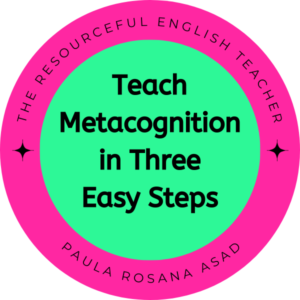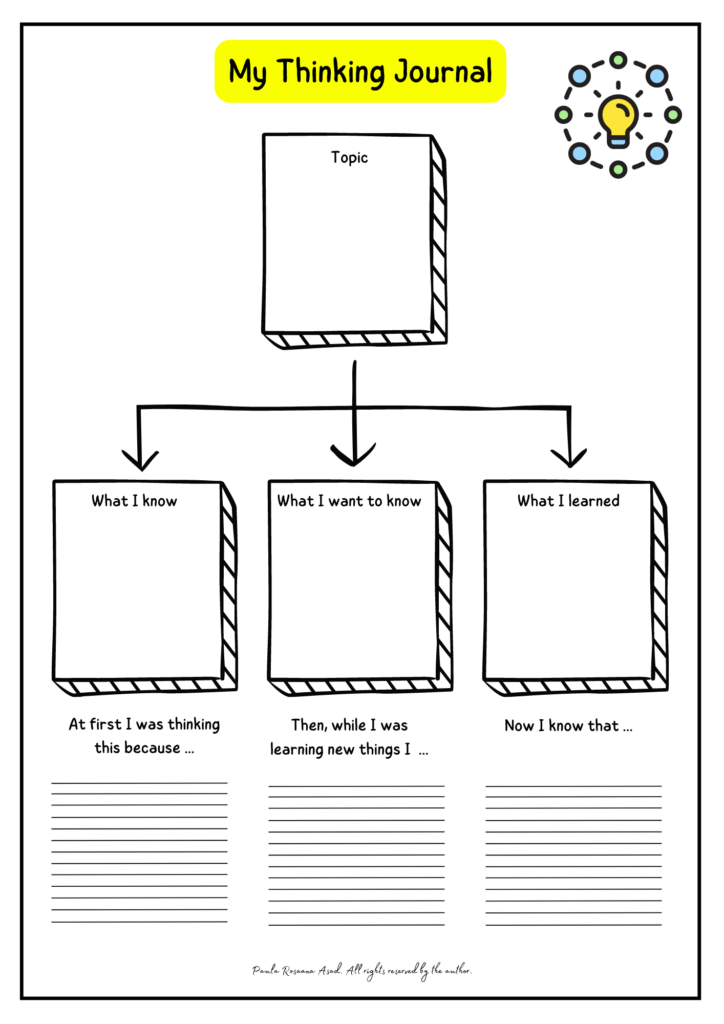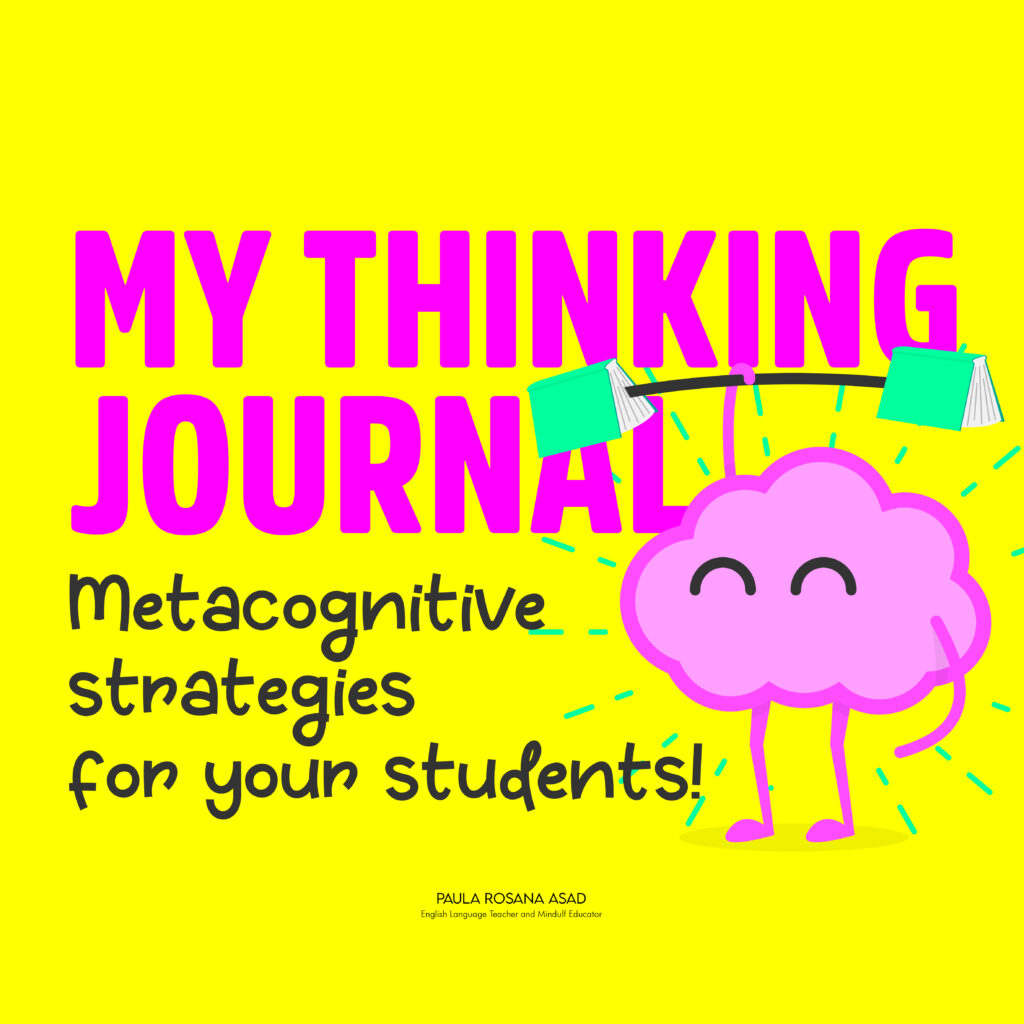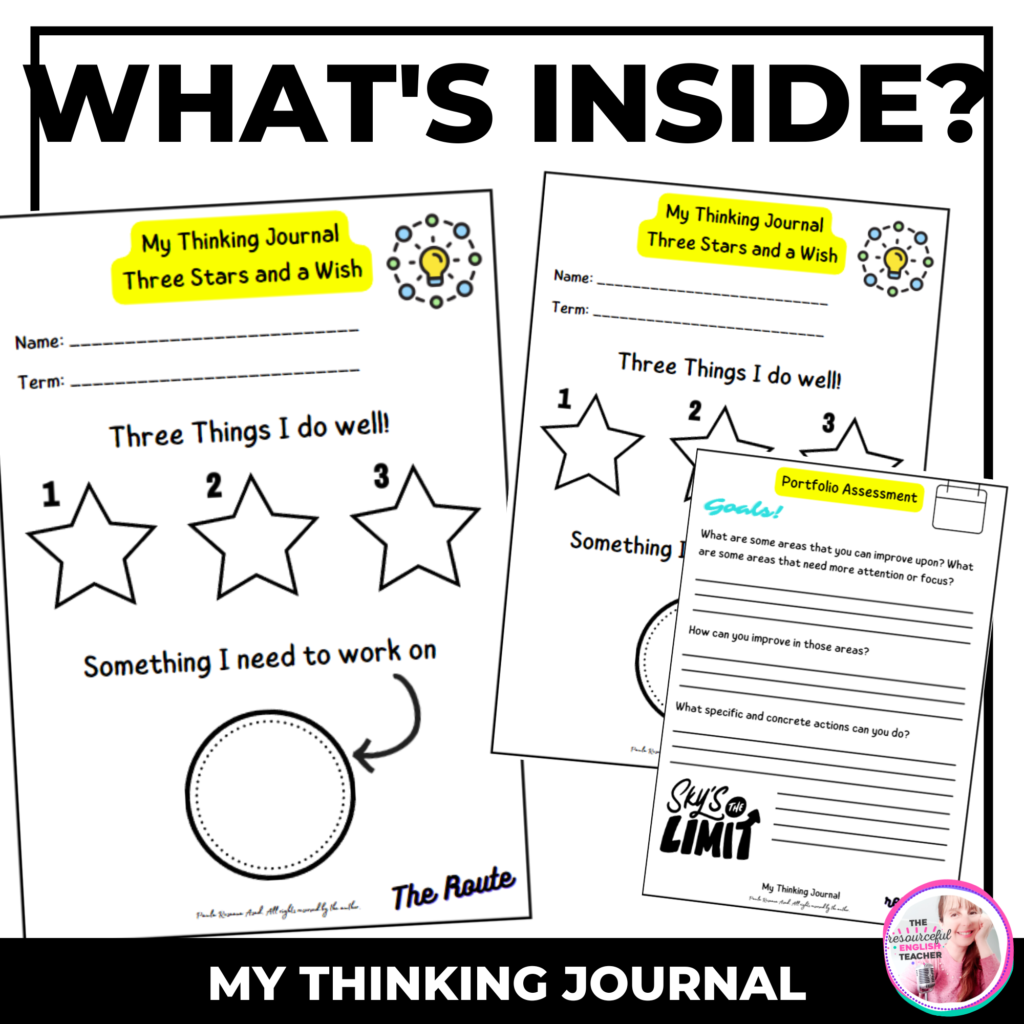Teach Metacognition in three easy steps
Do you want to give your students the tools to become independent and engaged learners? Metacognitive strategies are the answer, and it’s easier than you think! Teaching students how to reflect on their learning takes time, but it’s well worth the effort. Research shows that students who are aware of their learning process are more likely to succeed academically and outside the classroom. In this article, you’ll discover practical ideas to include Metacognition in your class, and helpful tools to boost self-regulation in your students. Let’s get started!

What is metacognition?
Metacognition is the process of thinking about one’s own thinking and learning. Some of the benefits that students get when they acquire metacognitive strategies are:
- More independence: Monitoring their progress lets them take control of their learning, inside and outside the classroom.
- Improved resilience. The best way to create a better learning experience is to focus on students’ progress and help them identify any roadblocks standing in their way. Students’ resilience increases when they can recognize their achievements and identify barriers to success. This, in turn, leads to better academics, improved classroom engagement, and higher self-esteem.
- Transferable knowledge. Metacognition can be used to transfer learning across different tasks and contexts. It is the ability to make connections between different areas of thought and to move information and skills from one subject to another. Through Metacognition, students can become more aware of their own learning processes, understanding the connections between different topics, and applying the knowledge they gain to other contexts.
How do you teach Metacognition? The Three Rs! The route, the reflection, and the review.
The three steps I usually teach my students to help them revise content and monitor their learning processes are based on the three Rs: the route, the reflection, and the review.
- The Route: This refers to the planning stage, which consists of setting learning goals. Tell learners explicitly what they are going to learn and why. Why do they need to know this or that? What are the benefits? How are they going to achieve those goals? Predicting how well they will perform in a task can also aid Metacognition. Download for FREE my Classroom Goals Visible Learning Resource HERE!
- The Reflection: While students are carrying out a task, give them sentence scaffolds to help them monitor their progress. For example: ‘This strategy is working well because…’, What I don’t understand is …, ‘I might have to change my strategy because…’, and ‘My next steps are…. Recognizing what we don’t understand also leads to better Metacognition.
- The Review: This stage is usually done at the end of the term. Here, students should gather evidence/no evidence of their understanding (portfolios are great for this), evaluate their progress (during conferences) and set new goals to improve next time. In my next blog post, I will develop this idea further. Stay tuned!
So far, so good? Last but not least!
KWL Charts!
A KWL chart is an excellent tool for teachers to help students navigate the “R-R-R” process. It’s an easy-to-use chart with three sections to fill out: What do I know? (k), What do I want to learn? (W), and What did I learn? (L). This chart helps teachers activate students’ prior knowledge, identify misunderstandings, and develop their curiosity. Using KWL charts can increase student engagement and understanding, so why not give it a try? Download a KWL chart HERE!

Check out my resource “My Thinking Journal” and find goal-setting worksheets, reflection questions, and Portfolio Assessment guides to help students think about their learning processes. CLICK HERE!
All in all, teaching metacognition is a process that helps learners take ownership of their learning. Incorporating the Three Rs, the route, the reflection, and the review into your classes can make all the difference. Reaching students with meaningful activities, tools, and prompts can help them develop their metacognitive skills. The journey begins with teaching students how to think about their own thinking. Can we do it? (Yell it with me now.) YES, WE CAN!
Paula.



